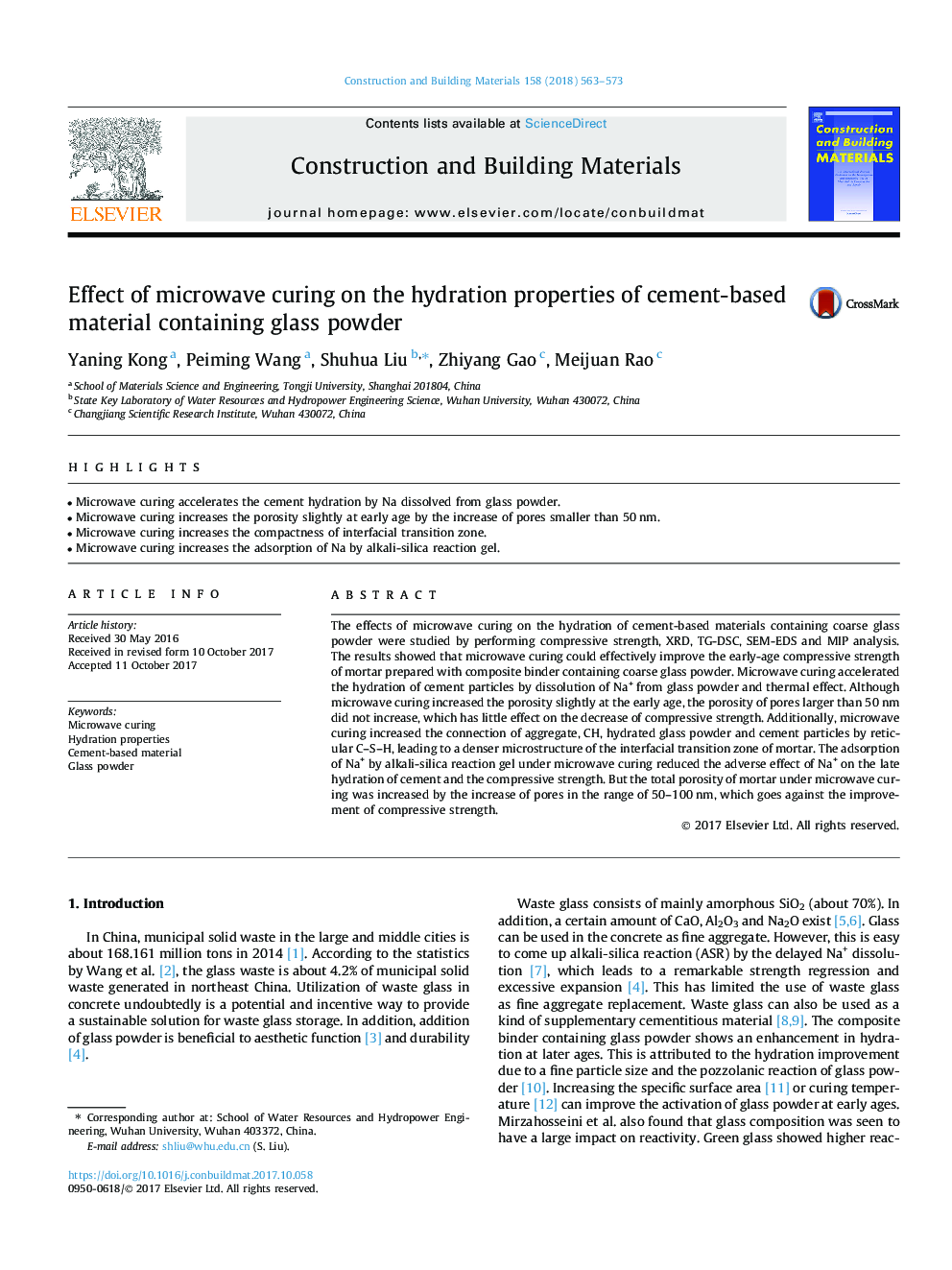| Article ID | Journal | Published Year | Pages | File Type |
|---|---|---|---|---|
| 4912624 | Construction and Building Materials | 2018 | 11 Pages |
â¢Microwave curing accelerates the cement hydration by Na dissolved from glass powder.â¢Microwave curing increases the porosity slightly at early age by the increase of pores smaller than 50â¯nm.â¢Microwave curing increases the compactness of interfacial transition zone.â¢Microwave curing increases the adsorption of Na by alkali-silica reaction gel.
The effects of microwave curing on the hydration of cement-based materials containing coarse glass powder were studied by performing compressive strength, XRD, TG-DSC, SEM-EDS and MIP analysis. The results showed that microwave curing could effectively improve the early-age compressive strength of mortar prepared with composite binder containing coarse glass powder. Microwave curing accelerated the hydration of cement particles by dissolution of Na+ from glass powder and thermal effect. Although microwave curing increased the porosity slightly at the early age, the porosity of pores larger than 50â¯nm did not increase, which has little effect on the decrease of compressive strength. Additionally, microwave curing increased the connection of aggregate, CH, hydrated glass powder and cement particles by reticular C-S-H, leading to a denser microstructure of the interfacial transition zone of mortar. The adsorption of Na+ by alkali-silica reaction gel under microwave curing reduced the adverse effect of Na+ on the late hydration of cement and the compressive strength. But the total porosity of mortar under microwave curing was increased by the increase of pores in the range of 50-100â¯nm, which goes against the improvement of compressive strength.
